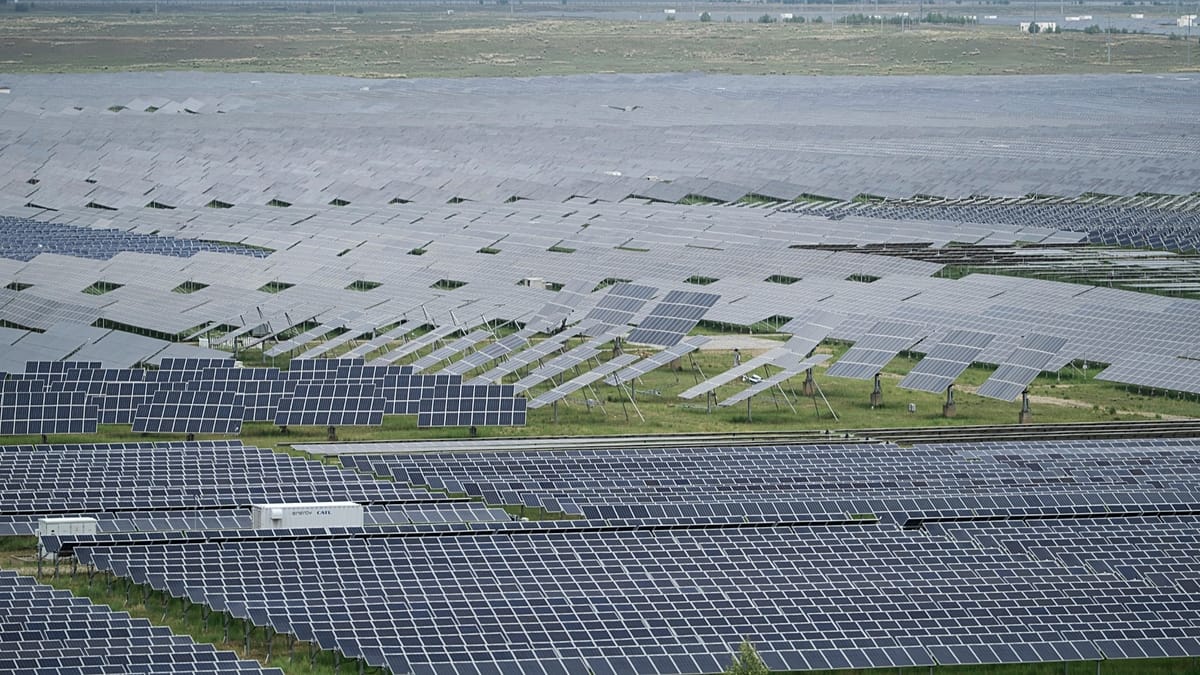China is the world’s largest polluter by total annual emissions. The country, which is heavily reliant on coal for energy, makes up 30 per cent of global emissions.
A new analysis finds that the country’s emissions have now been flat or falling for 18 months.
What does the report show?
The recent analysis, conducted by the Centre for Research on Energy and Clean Air (CREA) and published on Carbon Brief, finds the country is actually well on its way to reducing greenhouse gas emissions.
The analysis found that starting from March 2024, emissionswere either flat or falling. And even as growth in electricity demand accelerated from July to September, power-sector carbon dioxide emissions were flat.
According to the report, if this pattern repeats, then the country’s carbon dioxide emissions will record a fall for the full year of 2025.
“While an emission increase or decrease of 1 per cent or less might not make a huge difference in an objective sense, it has heightened symbolic meaning, as China’s policymakers have left room for emissions to increase for several more years, leaving the timing of the peak open,” writes Lauri Myllyvirta, lead analyst at the Centre for Research on Energy and Clean Air.
Despite this trend, China is still off target for cutting carbon intensity, or the carbon dioxide emissions per unit of gross domestic product, between 2020 and 2025. Steeper reductions are needed to hit the county’s goals, the authors write.
China has a record, however, of underpromising and overdelivering on its climate pledges.
What industries are responsible?
Solarand wind power deployment helped supply to meet growing demand while keeping energy sector emissions low. In the first nine months of 2025, China added 240 gigawatts (GW) of solar and 61GW of wind capacity in the first nine months of this year.
This puts the country on track for another renewable record in 2025 after it installed 333GW of solar power last year – more than the rest of the world combined.
Electricity generation fromsolar grew by 46 per cent in the third quarter of 2025, whereas wind grew by 11 per cent.
The rapid adoption of electric vehicles (EVs) also reduced emissions from transport fuel by 5 per cent year-on-year.
Emissions from the cement, metal, and steel industries also fell during the third quarter of 2025, by 7 per cent and 1 per cent respectively. Steel production emissions also declined.
Also in the third quarter, oil demand and emissions in the transport sector fell by 5 per cent. But the expansion of the chemical industry increased emissions by 10 per cent, as plastic and other chemical productions surged, offsetting reductions elsewhere.
Looking to the future
China recently submitted its Nationally Determined Contribution (NDC) – the country’s climate action plan – for 2035, committing to reduce economy-wide net greenhouse gas emissions by 7 to 10 per centfrom their peak.
While Chinese President Xi Jinping didn’t attend the leaders’ summit atCOP30, a Chinese delegation is present for the talks.
COP30 President André Corrêa do Lago praised the country for its climate commitments.
“China is coming up with solutions that are for everyone, not just China,” he said. “Solar panels are cheaper, they’re so competitive [compared with fossil fuel energy] that they are everywhere now. If you’re thinking of climate change, this is good.”
A new analysis published by the UN on Monday found that countries’ climate pledges put the world on track for a 12 per cent reduction in emissions by 2035.
The updated report takes into account new pledges – including China’s – which were submitted after the cutoff for the previous analysis at the end of October. The revised figure of 12 per cent is progress from the 10 per cent reduction announced on 28 October.
UN climate chief Simon Stiell called the new figure a “big deal”.
“Every fraction of a degree of heating avoided will save millions of lives and billions of dollars in climate damage.”

